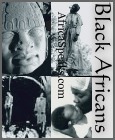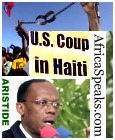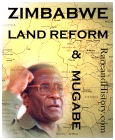A Look at the Myth of Reverse Racism
Posted: Monday, June 24, 2002By Tim Wise
Recently, when speaking to a group of high school students, I was asked why I only seemed to be concerned about white racism towards people of color. We had been discussing racial slurs, and a number of white students wondered why I didn’t get as upset about blacks using terms like “honky” or “cracker,” as I did about whites using words like “nigger.”
Although such an issue may seem trivial in the larger scheme of things—especially given the more significant discussions about racism in the educational system that I had hoped to engage in that day—the challenge posed by the students was actually an important one. In fact, it allowed a discussion about the very essence of what racism is and how it operates.
On the one hand, of course, such slurs are quite obviously inappropriate and offensive, and ought not to be used. That said, I pointed out that even the mention of the words “honky” and “cracker” had elicited laughter; and not only from the black students in attendance, but also from other whites.
The words are so silly, so juvenile, so utterly pathetic that they hardly qualify as racial slurs at all, let alone slurs on a par with those that have been historically deployed against people of color.
The lack of symmetry between a word like honky and a slur such as “nigger” was made apparent in an old Saturday Night Live skit, with Chevy Chase and guest, Richard Pryor.
In the skit, Chase and Pryor face one another and trade off racial epithets during a segment of Weekend Update. Chase calls Pryor a “porch monkey.” Pryor responds with “honky.” Chase ups the ante with “jungle bunny.” Pryor, unable to counter with a more vicious slur against whites, responds with “honky, honky.” Chase then trumps all previous slurs with “nigger,” to which Pryor responds: “dead honky.”
The line elicits laughs all around, but also makes clear, at least implicitly that when it comes to racial antilocution, people of color are limited in the repertoire of slurs they can use against whites, and even the ones of which they can avail themselves sound more comic than hateful. The impact of hearing the antiblack slurs in the skit was of a magnitude unparalleled by hearing Pryor say “honky” over and over again.
As a white person I always saw terms like honky or cracker as evidence of how much more potent white racism was than any variation on the theme practiced by the black or brown.
When a group of people has little or no power over you institutionally, they don’t get to define the terms of your existence, they can’t limit your opportunities, and you needn’t worry much about the use of a slur to describe you and yours, since, in all likelihood, the slur is as far as it’s going to go. What are they going to do next: deny you a bank loan? Yeah, right.
So whereas “nigger” was and is a term used by whites to dehumanize blacks, to imply their inferiority, to “put them in their place” if you will, the same cannot be said of honky: after all, you can’t put white people in their place when they own the place to begin with.
Power is like body armor. And while not all white folks have the same degree of power, there is a very real extent to which all of us have more than we need vis-à-vis people of color: at least when it comes to racial position, privilege and perceptions.
Consider poor whites. To be sure, they are less financially powerful than wealthy people of color. But that misses the point of how racial privilege operates within a class system.
Within a class system, people tend to compete for “stuff” against others of their same basic economic status. In other words, rich and poor are not competing for the same homes, bank loans, jobs, or even educations to a large extent. Rich competes against rich, working class against working class and poor against poor. And in those competitions racial privilege most certainly attaches.
Poor whites are rarely typified as pathological, dangerous, lazy or shiftless the way poor blacks are, for example. Nor are they demonized the way poor Latino/a immigrants tend to be.
When politicians want to scapegoat welfare recipients they don’t pick Bubba and Crystal from some Appalachian trailer park; they choose Shawonda Jefferson from the Robert Taylor Homes, with her seven children.
And according to reports from a number of states, ever since so-called welfare reform, white recipients have been treated far better by caseworkers, are less likely to be bumped off the rolls for presumed failure to comply with new regulations, and have been given far more assistance at finding new jobs than their black or brown counterparts.
Poor whites are more likely to have a job, tend to earn more than poor people of color, and are even more likely to own their own home. Indeed, whites with incomes under $13,000 annually are more likely to own their own home than blacks with incomes that are three times higher due to having inherited property.
None of this is to say that poor whites aren’t being screwed eight ways to Sunday by an economic system that relies on their immiseration: they are. But they nonetheless retain a certain “one-up” on equally poor or even somewhat better off people of color thanks to racism.
It is that one-up that renders the potency of certain prejudices less threatening than others. It is what makes cracker or honky less problematic than any of the slurs used so commonly against the black and brown.
In response to all this, skeptics might say that people of color can indeed exercise power over whites, at least by way of racially-motivated violence. Such was the case, for example, this week in New York City where a black man shot two whites and one Asian-Pacific Islander before being overpowered. Apparently he announced that he wanted to kill white people, and had hoped to set a wine bar on fire to bring such a goal to fruition.
There is no doubt his act was one of racial bigotry, and that to those he was attempting to murder his power must have seemed quite real. Yet there are problems with claiming that this “power” proves racism from people of color is just as bad as the reverse.
First, racial violence is also a power whites have, so the power that might obtain in such a situation is hardly unique to non-whites, unlike the power to deny a bank loan for racial reasons, to "steer" certain homebuyers away from living in “nicer" neighborhoods, or to racially profile in terms of policing. Those are powers that can only be exercised by the more dominant group as a practical and systemic matter.
Additionally, the "power" of violence is not really power at all, since to exercise it, one has to break the law and subject themselves to probable legal sanction.
Power is much more potent when it can be deployed without having to break the law to do it, or when doing it would only risk a small civil penalty at worst. So discrimination in lending, though illegal is not going to result in the perp going to jail; so too with employment discrimination or racial profiling.
There are plenty of ways that more powerful groups can deploy racism against less powerful groups without having to break the law: by moving away when too many of "them" move in (which one can only do if one has the option of moving without having to worry about discrimination in housing.)
Or one can discriminate in employment but not be subjected to penalty, so long as one makes the claim that the applicant of color was "less qualified," even though that determination is wholly subjective and rarely scrutinized to see if it was determined accurately, as opposed to being a mere proxy for racial bias. In short, it is institutional power that matters most.
Likewise, it’s the difference in power and position that has made recent attempts by American Indian activists in Colorado to turn the tables on white racists so utterly ineffective.
Indian students at Northern Colorado University, fed up by the unwillingness of white school district administrators in Greeley to change the name and grotesque Indian caricature of the Eaton High School “Reds,” recently set out to flip the script on the common practice of mascot-oriented racism.
Thinking they would show white folks what it’s like to “be in their shoes” and experience the objectification of being a team icon, indigenous members of an intramural basketball team renamed themselves the “Fightin’ Whiteys,” and donned t-shirts with the team mascot: a 1950’s-style caricature of a suburban, middle class white guy, next to the phrase “every thang’s gonna be all white.”
Funny though the effort was, it has not only failed to make the point intended, but indeed has been met with laughter and even outright support by white folks. Rush Limbaugh actually advertised for the team’s t-shirts on his radio program, and whites from coast to coast have been requesting team gear, thinking it funny to be turned into a mascot, as opposed to demeaning.
Of course the difference is that it’s tough to negatively objectify a group whose power and position allows them to define the meaning of another group’s attempts at humor: in this case the attempt by Indians to teach them a lesson. It’s tough to school the headmaster, in other words.
Objectification works against the disempowered because they are disempowered. The process doesn’t work in reverse, or at least, making it work is a lot tougher than one might think.
Turning Indians into mascots has been offensive precisely because it is a continuation of the dehumanization of such persons over many centuries; the perpetuation of the mentality of colonization and conquest.
It is not as if one group—whites—merely chose to turn another group—Indians—into mascots. Rather, it is that one group, whites, have consistently viewed Indians as less than fully human, as savage, as “wild,” and have been able to not merely portray such imagery on athletic banners and uniforms, but in history books and literature more crucially.
In the case of the students at Northern, they would need to be a lot more acerbic in their appraisal of whites, in order for their attempts at “reverse racism” to make the point intended. After all, “fightin” is not a negative trait in the eyes of most white folks, and the 1950’s iconography chosen for the uniforms was unlikely to be seen as that big a deal.
Perhaps if they had settled on “slave-owning whiteys,” or “murdering whiteys,” or “land-stealing whiteys,” or “smallpox-giving-on-purpose whiteys,” or “Native-people-butchering whiteys,” or “mass raping whiteys,” the point would have been made.
And instead of a smiling “company man” logo, perhaps a Klansman, or skinhead as representative of the white race: now that would have been a nice functional equivalent of the screaming Indian warrior. But see, you gotta go strong to turn the tables on the man, and ironic sarcasm just ain’t gonna get it nine times out of ten.
Without the power to define another group’s reality, Indian activists are simply incapable of turning the tables by way of well-placed humor.
Simply put, what separates white racism from any other form, and what makes anti-black, anti-brown, anti-yellow, or anti-red humor more biting and more dangerous than its anti-white equivalent is the ability of the former to become lodged in the minds of and perceptions of the citizenry.
White perceptions are what end up counting in a white-dominated society. If whites say Indians are savages (be they of the “noble” or vicious type), then by God, they’ll be seen as savages. If Indians say whites are mayonnaise-eating Amway salespeople, who the hell is going to care? If anything, whites will simply turn it into a marketing opportunity. When you have the power, you can afford to be self-deprecating, after all.
The day that someone produces a newspaper ad that reads: “Twenty honkies for sale today: good condition, best offer accepted,” or “Cracker to be lynched tonight: whistled at black woman,” then perhaps I’ll see the equivalence of these slurs with the more common type to which we’ve grown accustomed.
When white churches start getting burned down by militant blacks who spray paint “kill the honkies” on the sidewalks outside, then maybe I’ll take seriously these concerns over “reverse racism.”
Until then, I guess I’ll find myself laughing at the thought of another old Saturday Night Live skit: this time with Garrett Morris as a convict in the prison talent show who sings:
Gonna get me a shotgun and kill all the whiteys I see. Gonna get me a shotgun and kill all the whiteys I see. And once I kill all the whiteys I see Then whitey he won’t bother me Gonna get me a shotgun and kill all the whiteys I see.
Sorry, but it just isn’t the same.
Tim Wise is an anti-racist essayist, activist and lecturer. He can be reached at timjwise@msn.comPrinter friendly version
Send page by E-Mail

Previous Page | Zimbabwe Watch | Historical Views | Home
NOTICE: All articles are the copyright property of the writers. In accordance with Title 17 U.S.C., section 107, some material on this site is provided without permission from the copyright owner, only for purposes of criticism, comment, scholarship and research under the "fair use" provisions of federal copyright laws. Visit: http://www.law.cornell.edu/uscode/17/107.shtml for more details. If you wish to use copyrighted material from this site for purposes of your own that go beyond 'fair use', you must obtain permission from the copyright owner.










